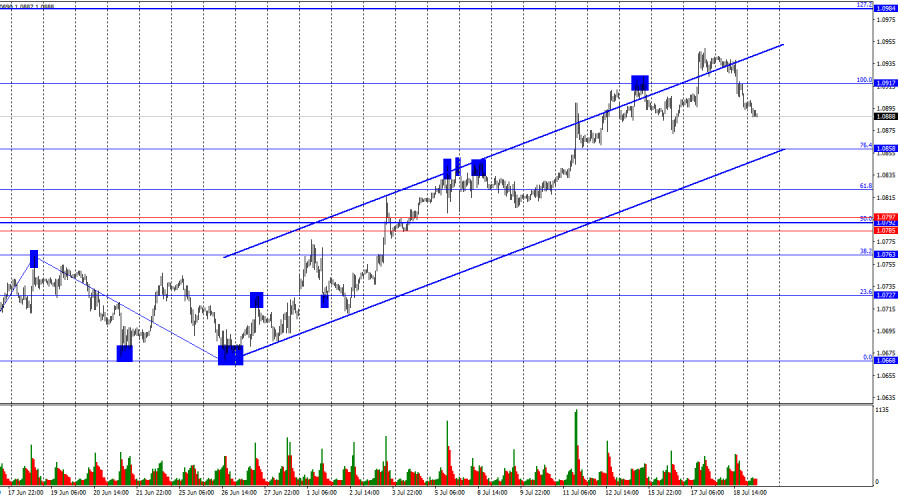

The recent rise in the euro was largely justified. This week, additional bullish pressure on the asset could have been avoided. However, yesterday's meeting can be considered the starting point for the future decline of the European currency. Let's briefly go over the key points that became known.
Interest rates remained unchanged.At the next meeting in September, the ECB may decide not to lower interest rates.Inflation in the services sector and core inflation are at too high levels.The EU economy slowed down in the second quarter.Wages are still growing too quickly.Additional risks may arise from the expansion and escalation of geopolitical conflicts.The main takeaway from the ECB meeting is that further monetary policy easing will depend on inflation and other economic indicators. But, first and foremost, on inflation. So why did the euro fall if the ECB did not give any guarantees of a rate cut in September? The issue does not lie with the ECB. The European currency had been rising for three weeks, and traders were pricing in all the most "hawkish" scenarios of the ECB meeting and the weakest data from the US. The euro became overbought, which led to its decline. The bulls ran out of fuel, and the ECB did not provide new strong incentives for buying.
Thus, the European currency may continue to decline towards the 76.4% Fibonacci retracement level of 1.0858. Its prospects will depend on the bears' ability to intensify pressure and maintain a position below the upward trend channel. Even in this case, the pair will form only a corrective wave within the "bullish" trend. But this also provides a chance for more than a 100-200 point pullback for the dollar and the bears.
However, if the Fed starts hinting at a rate cut in September, the dollar may quickly pull back. The market has likely already factored in a September rate cut in the US, but no one can guarantee this. The likelihood of a decline in the pair is relatively high.
Conclusion:
The trend for the EUR/USD pair remains bullish. As I mentioned, the dollar should not have fallen so much in the last two to three weeks. Therefore, I expect a strong downward pullback. Attention should now be given to the upward trend channel on the hourly chart. It has the best chance of showing when the "bullish" momentum will run out. However, the process of the momentum running out may take a long time as trader activity remains low.
Thus, the pair can be bought in case of a clear rebound from the level of 1.0858, near the lower line of the upward channel. If the pair closes below the channel, selling opportunities with targets of 1.0822 and 1.0797 should be considered.